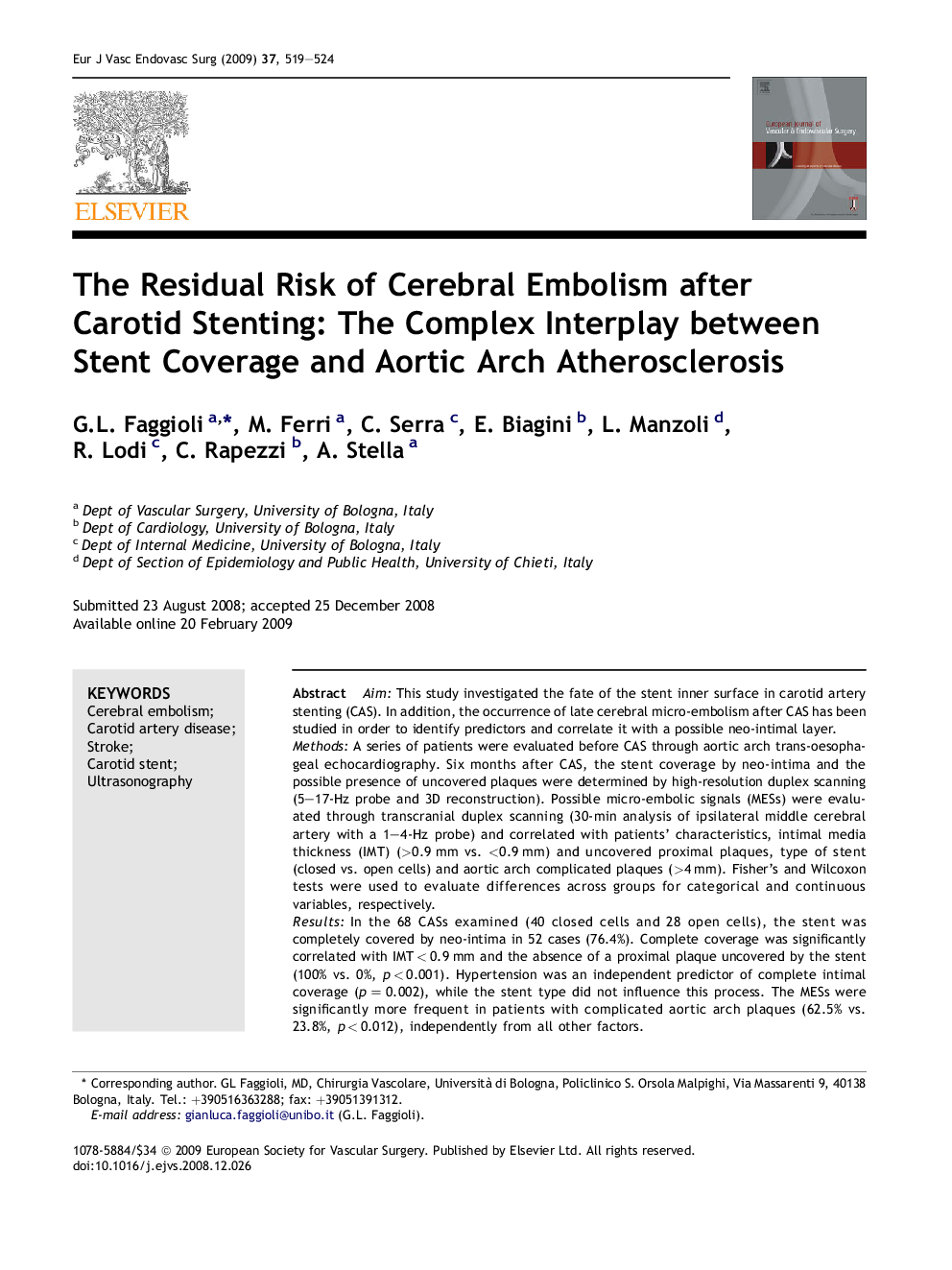| کد مقاله | کد نشریه | سال انتشار | مقاله انگلیسی | نسخه تمام متن |
|---|---|---|---|---|
| 2914706 | 1575518 | 2009 | 6 صفحه PDF | دانلود رایگان |

AimThis study investigated the fate of the stent inner surface in carotid artery stenting (CAS). In addition, the occurrence of late cerebral micro-embolism after CAS has been studied in order to identify predictors and correlate it with a possible neo-intimal layer.MethodsA series of patients were evaluated before CAS through aortic arch trans-oesophageal echocardiography. Six months after CAS, the stent coverage by neo-intima and the possible presence of uncovered plaques were determined by high-resolution duplex scanning (5–17-Hz probe and 3D reconstruction). Possible micro-embolic signals (MESs) were evaluated through transcranial duplex scanning (30-min analysis of ipsilateral middle cerebral artery with a 1–4-Hz probe) and correlated with patients' characteristics, intimal media thickness (IMT) (>0.9 mm vs. <0.9 mm) and uncovered proximal plaques, type of stent (closed vs. open cells) and aortic arch complicated plaques (>4 mm). Fisher's and Wilcoxon tests were used to evaluate differences across groups for categorical and continuous variables, respectively.ResultsIn the 68 CASs examined (40 closed cells and 28 open cells), the stent was completely covered by neo-intima in 52 cases (76.4%). Complete coverage was significantly correlated with IMT < 0.9 mm and the absence of a proximal plaque uncovered by the stent (100% vs. 0%, p < 0.001). Hypertension was an independent predictor of complete intimal coverage (p = 0.002), while the stent type did not influence this process. The MESs were significantly more frequent in patients with complicated aortic arch plaques (62.5% vs. 23.8%, p < 0.012), independently from all other factors.ConclusionsThe extent of the stent neo-intimal formation is independent of stent type, but it is correlated with proximal plaque coverage. Six months after CAS, MESs are still possible and are not prevented by complete neo-intimal stent coverage. Complicated aortic arch atherosclerosis is an independent predictor of late MES, thus underlying its importance in cerebral ischaemia onset.
Journal: European Journal of Vascular and Endovascular Surgery - Volume 37, Issue 5, May 2009, Pages 519–524